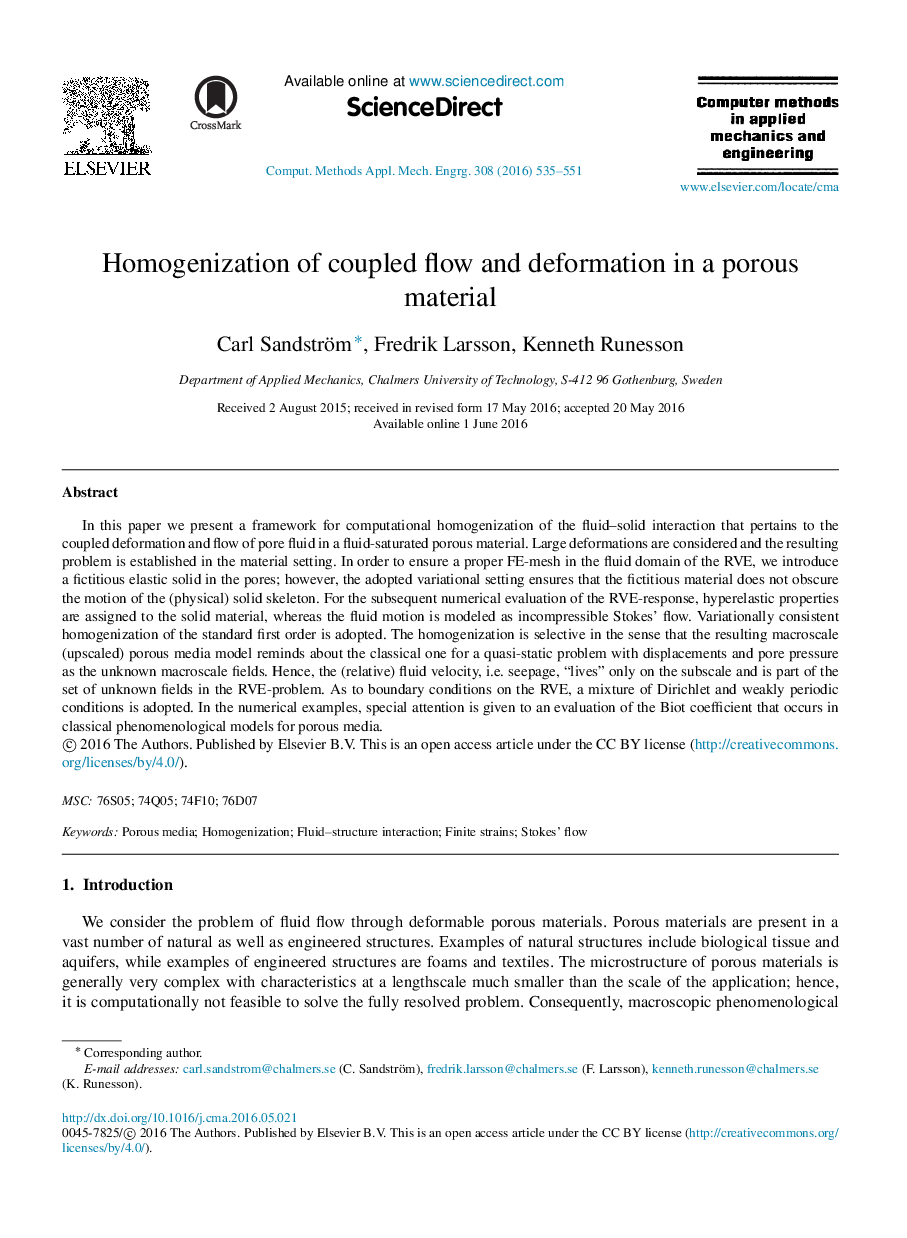| Article ID | Journal | Published Year | Pages | File Type |
|---|---|---|---|---|
| 6916021 | Computer Methods in Applied Mechanics and Engineering | 2016 | 17 Pages |
Abstract
In this paper we present a framework for computational homogenization of the fluid-solid interaction that pertains to the coupled deformation and flow of pore fluid in a fluid-saturated porous material. Large deformations are considered and the resulting problem is established in the material setting. In order to ensure a proper FE-mesh in the fluid domain of the RVE, we introduce a fictitious elastic solid in the pores; however, the adopted variational setting ensures that the fictitious material does not obscure the motion of the (physical) solid skeleton. For the subsequent numerical evaluation of the RVE-response, hyperelastic properties are assigned to the solid material, whereas the fluid motion is modeled as incompressible Stokes' flow. Variationally consistent homogenization of the standard first order is adopted. The homogenization is selective in the sense that the resulting macroscale (upscaled) porous media model reminds about the classical one for a quasi-static problem with displacements and pore pressure as the unknown macroscale fields. Hence, the (relative) fluid velocity, i.e. seepage, “lives” only on the subscale and is part of the set of unknown fields in the RVE-problem. As to boundary conditions on the RVE, a mixture of Dirichlet and weakly periodic conditions is adopted. In the numerical examples, special attention is given to an evaluation of the Biot coefficient that occurs in classical phenomenological models for porous media.
Related Topics
Physical Sciences and Engineering
Computer Science
Computer Science Applications
Authors
Carl Sandström, Fredrik Larsson, Kenneth Runesson,
